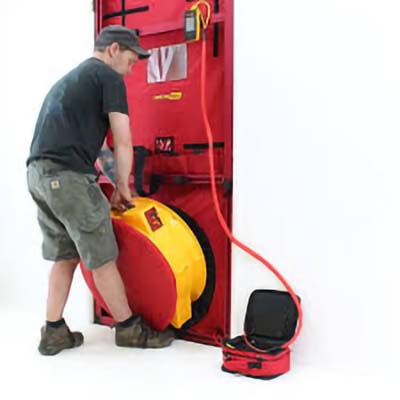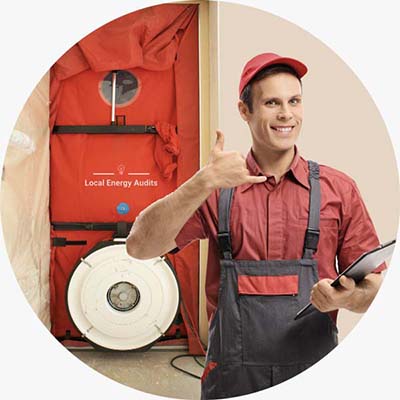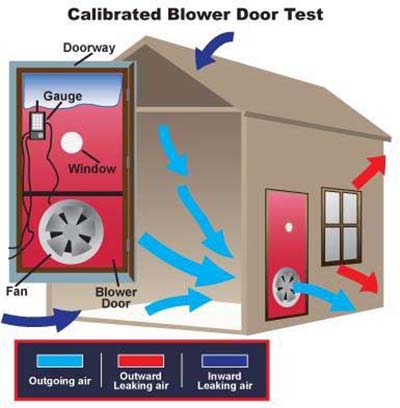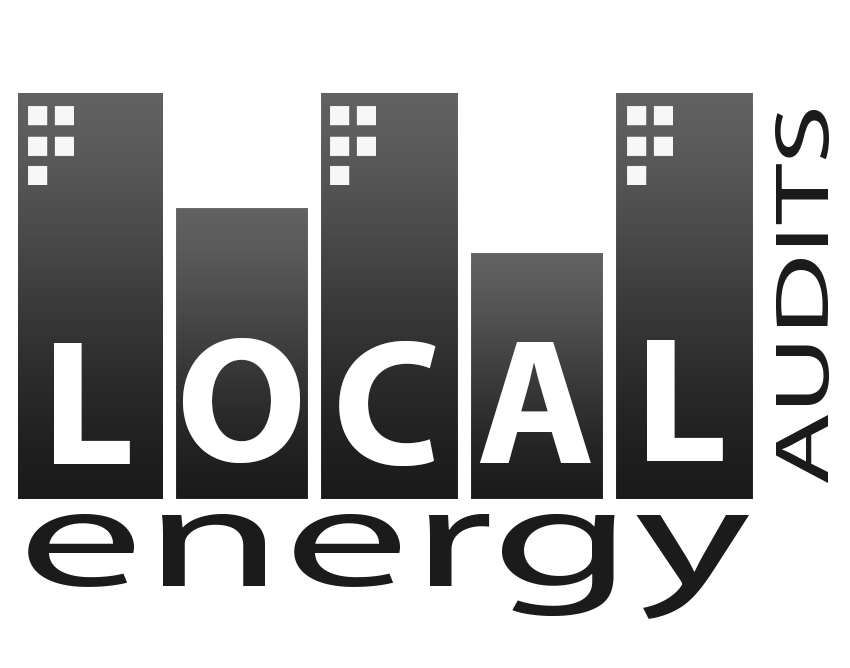Blower Door Test in Troy, TX | Certified Energy Testing
When building a new home or multi-family property in Troy, TX, a blower door test is often necessary to comply with the 2018 International Energy Conservation Code (IECC).
With a team of certified energy testers, we offer accurate and trustworthy blower door and duct leakage testing to help your project meet Texas energy code standards. We are experts in diagnosing air leakage problems that negatively impact energy conservation, indoor air quality, and HVAC-related expenses. We deliver certified, cost-effective, and prompt blower door testing in Troy, TX, and nearby areas for builders, contractors, and homeowners.

What Is a Blower Door Test?
- Energy efficiency – Energy loss from leaky homes causes utility bills to rise.
- Indoor air quality – Poorly sealed homes may allow allergens and airborne pollutants to enter.
- HVAC performance – Air leakage forces HVAC systems to work harder.
- Comfort levels – Excessive air leakage leads to uncomfortable drafts and shifting temperatures.
How Does a Blower Door Test Work?
To perform a blower door test, a strong fan is fixed on an exterior door to modify the air pressure inside and outside the home. A pressure gauge determines the rate at which air enters through small openings, cracks, and leaks in a home. If uncontrolled air leakage is detected in a home, addressing it with sealing and insulation upgrades may be required.

Do You Need a Blower Door Test in Troy, TX?
In Troy, TX, the 2018 IECC requires a blower door test for all new residential buildings to confirm compliance with energy efficiency regulations.
You may also need a blower door test if:
✔ Your new home construction must successfully pass the final energy efficiency inspection.
✔ Your energy bills are high and you suspect excess air leakage.
✔ You experience drafts, uneven heating, or poor indoor air quality.
✔ You are applying for an energy efficiency rebate or certification.
If your home or project requires a blower door test, we guarantee quick appointments, same-day results, and official energy code certification.

Texas Energy Code Requirements for Blower Door Testing
The 2018 IECC requires homes in Texas to achieve the following air tightness performance levels.
- 3-5 (Air Changes Per Hour at 50 Pascals) depending on location.
- Homes exceeding this air leakage limit may require additional air sealing measures.
If an air handler, ductwork, or other HVAC components are outside the conditioned space, a duct leakage test must also be performed.
Our Blower Door Testing Process
In Troy, TX, when you arrange a blower door test, our certified professionals follow a structured approach to ensure compliance:
Step 1: Preparation
- All windows and doors are securely closed.
- HVAC systems and exhaust fans are turned off.
- A blower door fan is installed in the main entryway.
Step 2: Conducting the Test
- By pulling air out, the blower door fan depressurizes the home to imitate real-life air leakage.
- High-precision digital gauges track air infiltration rates and pinpoint leakage areas.
Step 3: Test Report & Certification
- For energy code adherence, we supply a detailed blower door test report.
- If necessary, we help identify and fix air leaks to ensure your home meets the standards.
Our goal is to provide a speedy, expert, and trouble-free process, keeping your project on time.

Why Choose Us for Blower Door Testing in Troy, TX
When you trust our team for blower door testing in Troy, TX, you can expect:
✔ Certified Energy Experts – Fully licensed and trained professionals.
✔ Fast Scheduling – We work around your project timeline.
✔ Same-Day Results – Receive a certified test report immediately.
✔ Affordable Rates – Competitive pricing with no hidden fees.
✔ Duct Leakage Testing Available – One-stop compliance for all Texas energy codes.

Schedule Your Blower Door Test in Troy, TX Today!
Looking to schedule a blower door test in Troy, TX? We keep the process quick and stress-free. Contact us today to set up your test and ensure your project follows Texas energy code standards.



